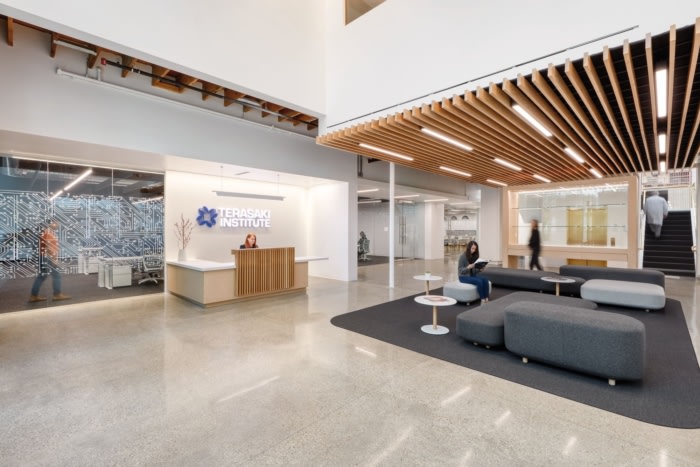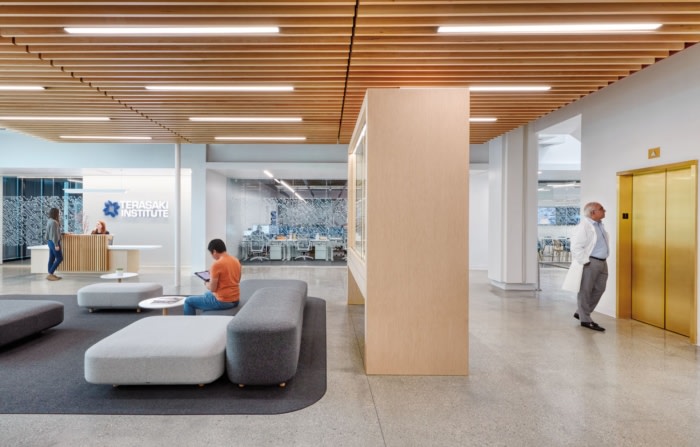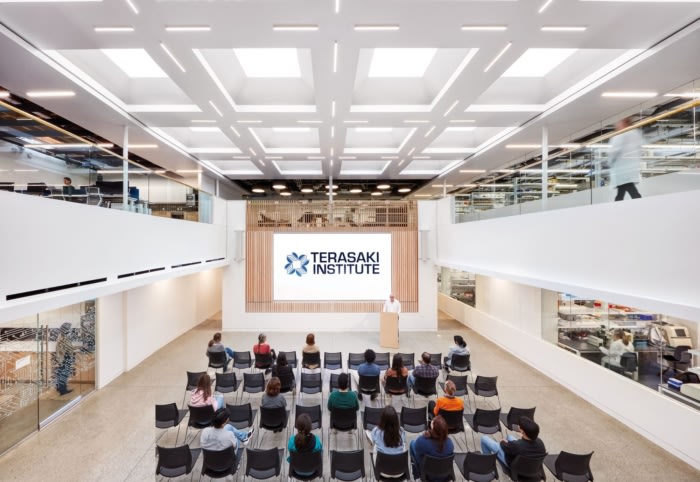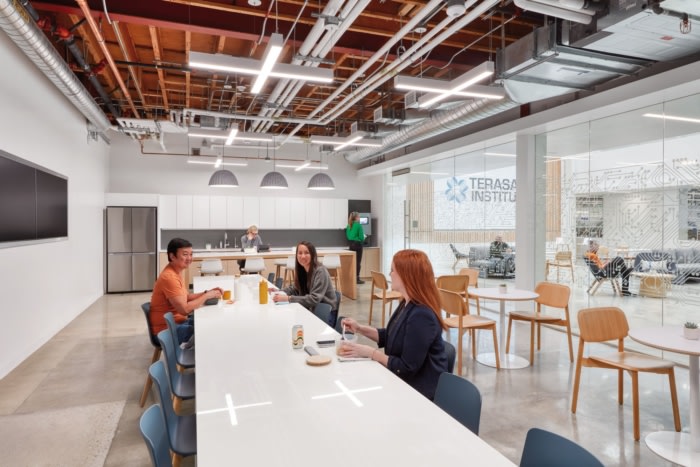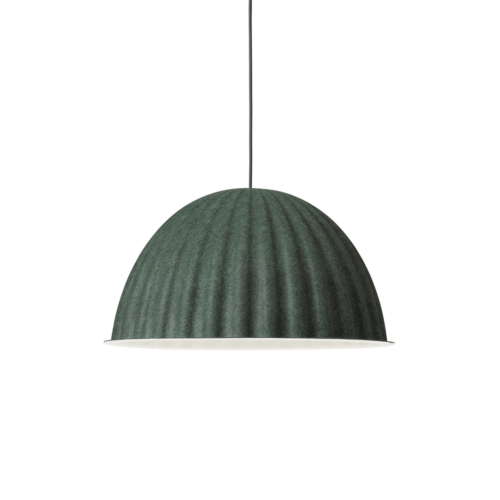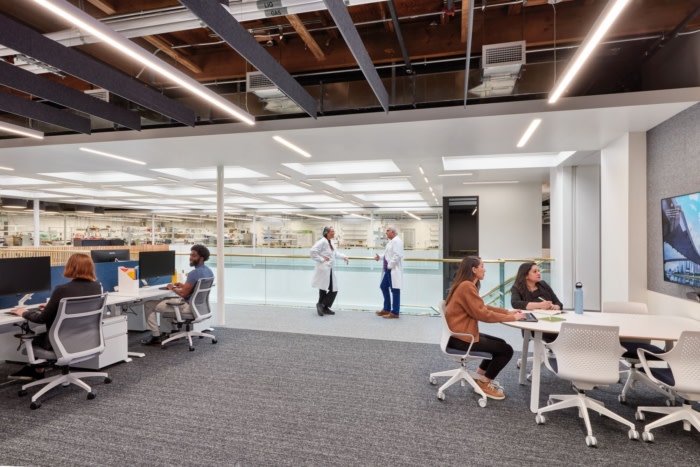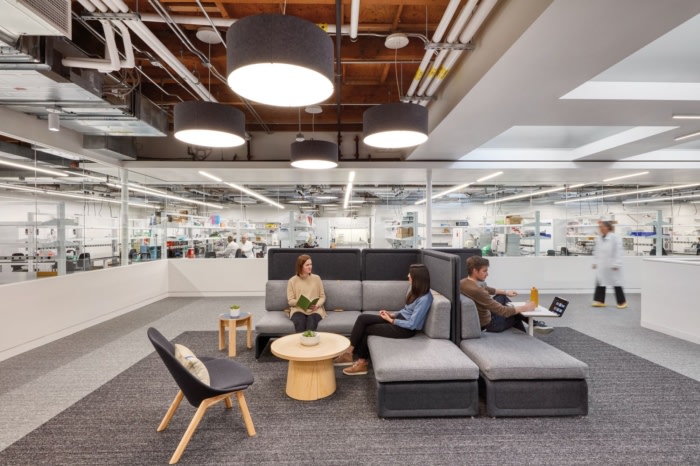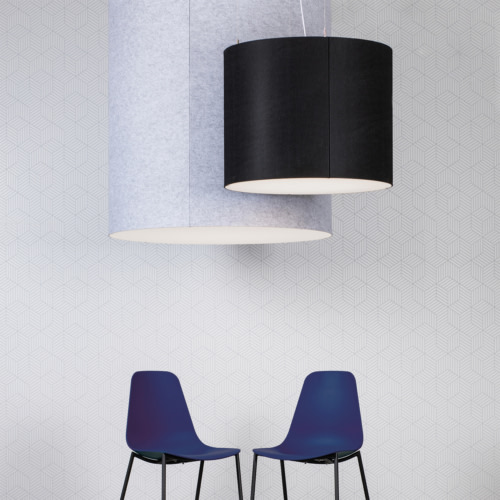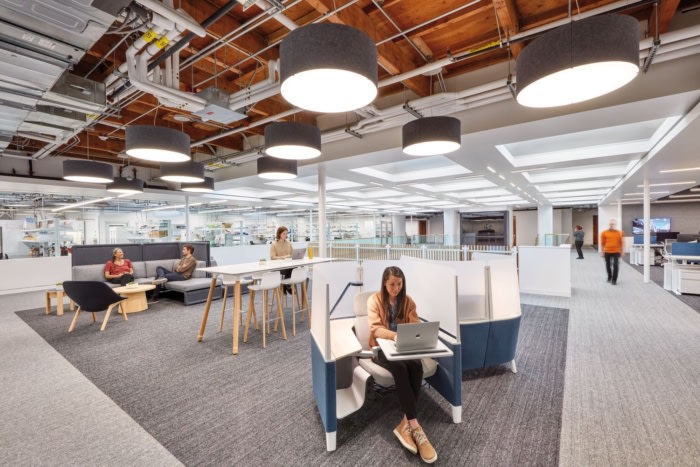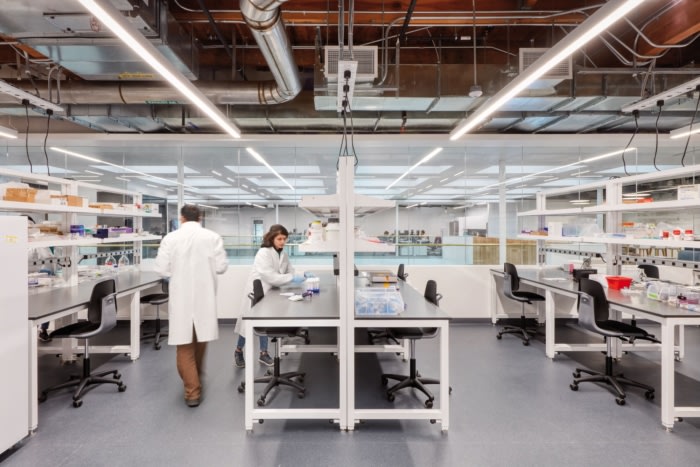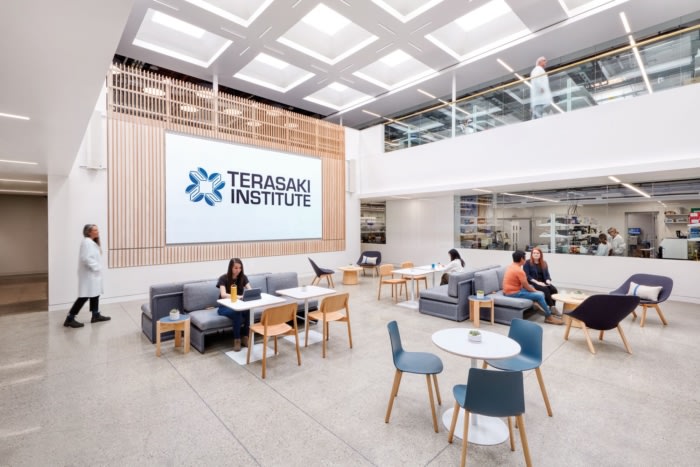
Terasaki Institute Biomedical Labs & Offices – Los Angeles
CO Architects designed the 50,500 square-foot biomedical office and laboratories for Terasaki Institute located in Los Angeles, California.
The nonprofit Terasaki Institute for Biomedical Innovation researches micro- and nanotechnologies and applications in diagnostics, therapeutic drug delivery, and regenerative medicine. In need of a new headquarters, Terasaki Institute turned to CO Architects to renovate a warehouse-turned-office-building into a modern research laboratory facility to house nearly 100 faculty members and scientists in Woodland Hills, CA, roughly 25 miles northwest of Los Angeles. Built in 1971, the 50,500-square-foot, two-story, wood-framed former warehouse comprises glulam beams and wood trusses. In the late 1980s it was converted into offices to serve as the headquarters of Weider Health and Fitness, where magazines such as Shape and Muscle & Fitness were published and bodybuilding supplements were warehoused. CO transformed these closed-off offices into an open environment that fosters innovation, while preserving the historic elements of the structure.
Inaccurate as-built drawings necessitated a process of exploration and discovery in the existing building, which posed many structural, code, and performance issues. Demolition of non-load bearing walls revealed both the beautiful wood joist and steel structure, as well as shear walls, columns, and beams—none of which had been documented. CO Architects took a 3D building scan that generated a digital twin/cloud points for dimensions and provided a full view of the existing structure, creating a basis for cost-effective solutions to make the design durable and long lasting. Some of these included providing new curtain wall and roofing, designing a mechanical well, upgrading the structure to prevent vibration, and re-routing pipes underground.
A plaster relief pattern of body builders—resembling classical Greek figures—on the main façade was preserved as a nod to the building’s roots in the health and fitness industry. CO Architects wanted to retain some of the old structure while also creating a state-of-the-art, up-to-date work environment. For instance, on the interior, the wood structure remains exposed and wood slats interspersed with linear LED fixtures are introduced on the ceiling in the lobby. Extending the visual relationship, the wood slats are also used on the reception desk as well as for the large feature video wall.
The highlight of the project is the central double-height atrium illuminated by existing skylights and featuring a 16’x9’ LED video display wall. This flexible space acts as a collaborative lounge and meeting area, as well as a public forum that hosts lectures, symposia, and other gatherings such as movie nights for staff. Both a central display case exhibiting specific research artifacts and the custom circuit pattern on glass walls reflect the organization’s history and values.
Wood-paneled executive suites were transformed into conference and meeting rooms. Laboratories feature glazed walls to provide glimpses into the experiments conducted within. Open work areas offer flexible workstations, high tables, and soft lounge seating—much of it in corporate blue—to adapt to a variety of work styles. A generous employee breakroom fosters communication and camaraderie.
The state-of-the-art laboratories include 116 mobile benches that provide flexibility for the variety of research that the institute explores, while allowing capacity for more. The space is supported with utilities that facilitate the research, including tissue culture, imaging, and histology rooms.
Biomedical research is focused on improving quality of life, so it’s only fitting that a biomedical research center would be designed to do the same for the scientists who are innovating within. The open and light-filled design sets the stage for scientific advancements for Terasaki Institute, all while paying homage to the rich history of the structure itself.
Design: CO Architects
Contractor: MATT Construction
Photography: Kim Rodgers
